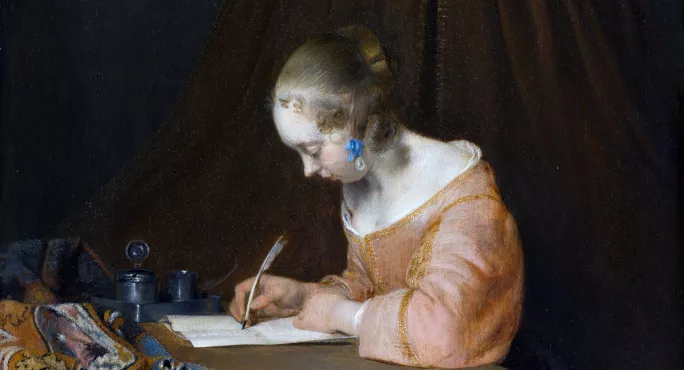- Home
- How we resurrected the lost art of writing letters
How we resurrected the lost art of writing letters

How long has it been since you received a handwritten letter?
A recent National Literacy Trust report found that two-thirds of school-aged children had never written a letter simply for pleasure.
But those who have done report that the process makes them feel happy and that, in particular, they like the thought of making the recipient feel happy.
Quick read: How I created a life-changing creative writing group
Quick listen: How to teach a child a lesson for life
Want to know more? Let’s get creative about the knowledge-rich classroom
When I was contacted by my old French teacher recently, after 24 years, she sent back to me a letter I had written her when I was in Year 9, thanking her for her teaching.
The letter, having been kept for so long, inspired me to design a project for our students that would awaken them to the power of letters.
While writing letters of complaint or with a specific purpose forms part of the English curriculum, the connections created through receiving and replying to personal letters are different, and powerful.
In our project, Lilac Letters, I wanted our girls to focus on encouraging a response from the reader.

Each student wrote to an alumna of the school, who had attended between 1930 and 1970. All they were told was the name of the old girl and the years they had attended our school.
We encouraged the girls to research the education of the era and the local area, to draw comparisons with their own education and aspects of their lives that they wanted to share with their recipients.
We asked the girls to focus on questioning and what they would most like to learn from a person who would be at least 50 years their senior. Some asked for life advice, others wanted to know about the role of women in society and whether the freedom of the 1970s resulted in fewer detentions.
Writing letters and the waiting game
In an age of instant communication and email, the nature of the project meant that girls then had to wait, patiently, for the replies to come in.
They have now received replies from more than 250 of the women they wrote to, from as far afield as New Zealand, Ghana and Brazil. There are accounts of studying lessons in the school’s air-raid shelters during daytime bombing raids, the flavour of school dinners during rationing and even the advent of the Biro pen.
Those who received the letters and still live in the local area have been keen to make links with their new pen pals, with replies now flowing freely and even some visits to the school.
The response letters were given out in a whole-school assembly, where the awe and wonder of reading the replies was palpable. So many of them referred to the joy of receiving a handwritten letter.
By looking back to the past and moving away from email and social media, our students have developed a valuable life skill. If you want to plan a similar project, here are some top tips:
-
Include large numbers of students and put them in small groups. This will maintain momentum as students wait for replies and will allow students to share these with each other, so that it won’t matter if someone in the group doesn’t receive one.
-
Use personal letters from key figures in the past as exemplars; letters from and to soldiers at war, from Queen Victoria to her children or from Abraham Lincoln (there are many).
-
Offer model letters to those who need them, especially those with EAL, for whom the nature of letter-writing in this way can be challenging. I provided a scaffolded writing frame for those who needed it.
-
Teach students the importance of questioning in a letter and allow them to create questions themselves - they will be much more interested in the reply if the questions are genuine.
-
Choose the recipients wisely. The benefit of using alumnae from the school is that a personal connection is more likely to generate a reply, but it would also be possible to link up with community groups or care homes.
-
Writing to a total stranger is difficult, but simply offering the age or local area of the recipient can give students something to start from.
-
Share the best replies with the whole school - we plan to make a book of ours to be kept in the school library.
-
Plan for the next step. Once they receive a reply, your students are likely to want to keep the replies going.
-
Be careful with data protection. Make sure the recipients have agreed to be contacted and manage the letters centrally, making sure that pupils use the school’s address at the top of the letter.
-
Include a cover letter explaining the project and outlining the next steps - almost all of our recipients were happy to then share their addresses with our students to keep receiving letters.
Beth Dawson is deputy head at Sutton High School, part of the GDST. She tweets @SuttonHighDH
Keep reading for just £1 per month
You've reached your limit of free articles this month. Subscribe for £1 per month for three months and get:
- Unlimited access to all Tes magazine content
- Exclusive subscriber-only stories
- Award-winning email newsletters
